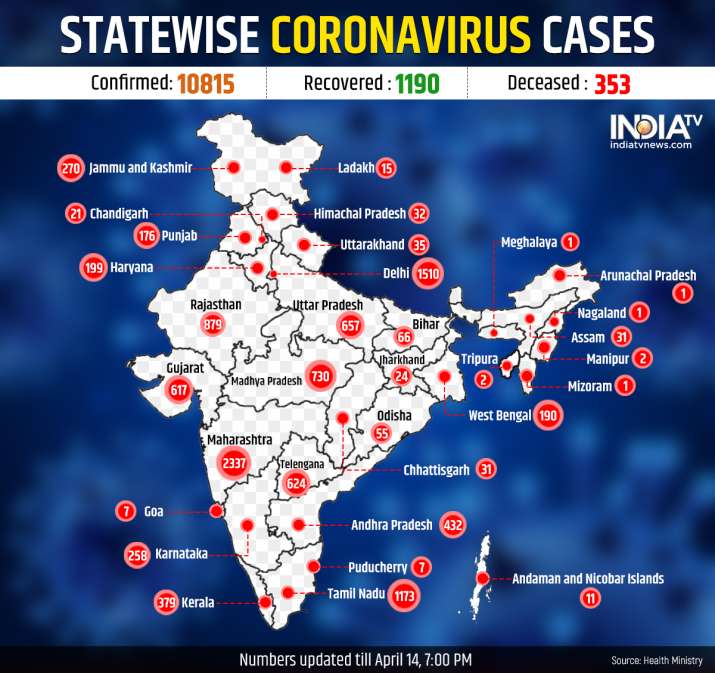

- Covid totals by state list update#
- Covid totals by state list full#
- Covid totals by state list series#
In states reporting data in “congregate settings,” which could include locations such as jails and prisons, we removed reported cases and deaths in non-long-term care settings when possible. Definition of long-term care facility differs by state, but data reflects a combination of nursing facilities, residential care communities, adult care centers, intermediate care facilities, and/or other congregate settings. We include all available long-term care facility data reported by state, including cases among both residents and staff, where available. The one exception to this is Texas’ counts, which are official state numbers sent directly to reporters 3x/week. We use data reported directly by states (versus through news outlets) through either state COVID-19 reporting or state press releases. This data note provides data on long-term care facility cases and deaths by state (Table 1 and Table 2). This data is not yet available, but there are a number of states that are already reporting data on long-term care facilities. On April 19, 2020, CMS released guidance that would require nursing homes to report cases of coronavirus directly to the Centers for Disease Control and Prevention (CDC). Until recently, however, there was no federal requirement for nursing homes to report coronavirus outbreaks and COVID-19 deaths, leading to an information gap for families, residents, and policymakers.
Covid totals by state list series#
CMS has released a series of guidelines targeted at reducing the impact of COVID-19 on nursing homes and other long-term care facilities, including guidance related to visitor restrictions, infection control guidelines, and designating separate facilities for coronavirus positive patients and negative patients. IntroductionĬOVID-19 has had a disproportionate effect on people who reside or work in long-term care facilities, including the 1.3 million individuals in nursing homes 800,000 in assisted living facilities 75,000 in intermediate care facilities and 3 million people who work in skilled nursing or residential care facilities. In Michigan, Puerto Rico, Texas, and Vermont, retailers who sold a mix of essential and non-essential items were only allowed to sell essential items.Note: More recent figures are available in the “Additional State-level Data” section of our state COVID-19 data and policy actions tracker. May 26 (declared unconstitutional on May 13) March 25 (declared unconstitutional on May 13) State/territoryġ1 or more, and public gathering in public placesĪll outside, and 11 or more inside a household A Columbia University model estimated 54,000 deaths would have been prevented if states had enacted restrictions starting a few weeks earlier, on March 1. Many counties and municipal jurisdictions have imposed more stringent regulations. This is a list of regulations that were imposed at the state level, restricting activities and closing facilities as a result of the pandemic.
Covid totals by state list full#
Initial pandemic responses, including full lockdowns
Covid totals by state list update#
Please help update this article to reflect recent events or newly available information. The reason given is: Many emergency declarations have been lifted or expired, as have many stay-at-home and mask orders. This section's factual accuracy may be compromised due to out-of-date information. Thousands of US counties also initiated their own policy responses to the pandemic, resulting in significant variability even within states. States with tougher policies generally had fewer COVID cases and deaths.

At the beginning of the pandemic to early June 2020, Democratic-led states had higher case rates than Republican-led states, while in the second half of 2020, Republican-led states saw higher case and death rates than states led by Democrats. There was a link between public health outcomes and partisanship between states. On the West coast: California, Oregon, and Washington state in the Northeast: Massachusetts, New York, New Jersey, Connecticut, Delaware, Pennsylvania, and Rhode Island and in the Midwest: Michigan, Ohio, Wisconsin, Minnesota, Illinois, Indiana, and Kentucky. Multiple groups of states formed compacts in an attempt to coordinate some of their responses.

State, territorial, tribal, and local governments responded to the COVID-19 pandemic in the United States with various declarations of emergency, closure of schools and public meeting places, lockdowns, and other restrictions intended to slow the progression of the virus. No order ever issued Full map including municipalities


 0 kommentar(er)
0 kommentar(er)
